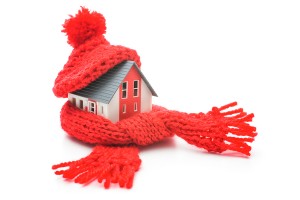A regular Chicago area family wastes about a 30% of its yearly heating and cooling budget — about $350 — through unintended gaps and cracks called air leaks. With the money that goes right out the window in 12 months, you can afford to make an effort to take care of those leads yourself with a trip to the hardware store.
The gold standard of energy standards – Energy Star – said that it’s the most cost-effective thing you can do to save energy and increase your comfort.
Here are tips to trap those leaks, save money and create a more energy efficient environment for your home.
The Attic
Statistically, it’s the biggest area of energy leaks. Energy gets sucked upwards, so it only makes sense that a lot of air gets pulled out through the top of your home. Invest in insulation and if you don’t know how to do it yourself, get a pro to do it – otherwise you’ll probably not do it correctly and you’ll still have an air leak problem.
Attic Access Door
This may sound small, but a quarter inch gap around pull-down attic stairs or an attic hatch lets through the same amount of air as a bedroom’s heating duct. Plug the air leak by caulking between the stair frame and the rough opening, or by installing foam weather stripping around the perimeter of the hatch opening. Or you can buy a pre-insulated hatch cover kit for stairs ($150) or doors ($350 and up) at a hardware store.
Lighting Fixtures
Here’s an often-overlooked culprit: recessed lights. They have vents that open into the attic and so you know how that story ends. When you consider that many homes have 20 or more of these fixtures, it’s easy to see the light. Get a ladder and get these leaks plugged.
Also note that lights identified as ICAT for “insulation contact and air tight,” are already sealed. If you don’t see it, assume yours leaks. An airtight baffle ($8 to $30) is a quick, inexpensive fix. Remove the bulb, push the baffle up into the housing, and then put the bulb back in.
Plug Open Stud Cavities
As with most Chicago area homes, yours probably has an inner layer of drywall or plaster between living space and unheated parts. But contractors in the past often skipped this cover behind knee walls, which are partial-height walls where the roof angles down into the top floor. Tsk tsk.
Back to the attic, you may need to push insulation away to know if the stud cavities are open. If they are, seal them with unfaced fiberglass insulation (less than $1 a square foot at most hardware stores) stuffed into plastic garbage bags. The bag is key to blocking airflow. If you don’t know how to do this, get a pro to help – otherwise you’ll have wasted a Saturday on housework and you’ll still have an air leak.
Close large gaps with scraps of drywall or pieces of reflective foil insulation (less than $2 a square foot). Once you’ve covered the gaps, smooth the insulation back into place.
Flues & Chimneys
Not really the attic, but it’s still up there! Building codes require that wood framing be kept at least one inch from metal flues and two inches from brick chimneys. However, that creates gaps where air can flow through.

Cover the gaps with aluminum flashing ($12) cut to fit and sealed into place with high-temperature silicone caulk ($14). To keep insulation away from the hot flue pipe, form a barrier by wrapping a cylinder of flashing around the flue, leaving a 1-inch space in between. To ensure the right spacing, cut and bend a series of inch-deep tabs in the cylinder’s top and bottom edges.
If air leaks are a problem in your home – and not just at the top – air leaks can happen all over the place, call us at (847) 503-9497. We’ll get a heating technician to your home to evaluate your situation. Whether you’re in Lake Forest, Skokie or Wheeling, we can be there to help you stay comfortable!

